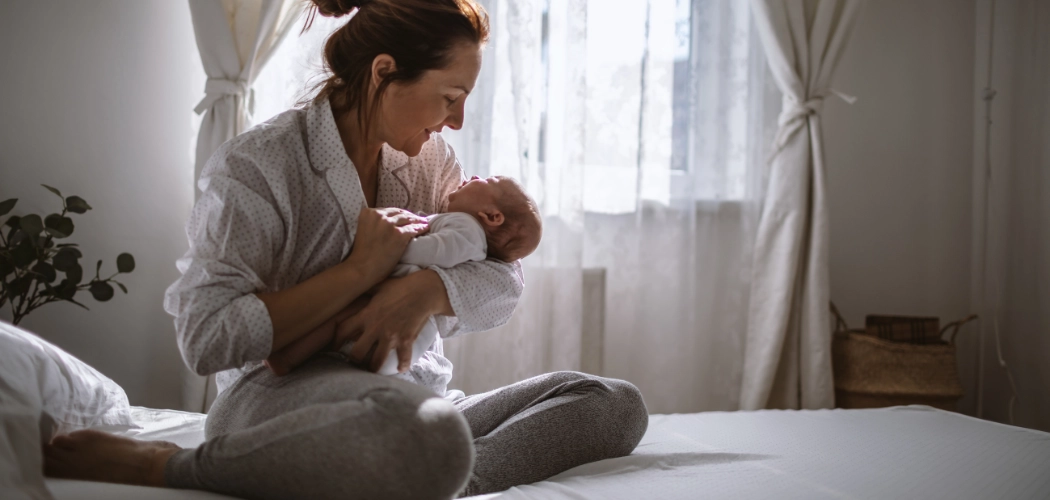Napping during the day is often seen as unproductive, lazy, or a sign that you’re not getting enough sleep at night. However, when done right, an afternoon nap can have tremendous benefits for your health, productivity and happiness.
A nap is a short period of sleep taken during regular waking hours. Naps typically last between 10 and 30 minutes. This brief rest during the day offers a quick way to recharge both your body and mind.
The key benefits of nap time include:
- Improved memory and learning
- Increased alertness and productivity
- Reduced stress and improved mood
- Enhanced motor skills and reaction time
- Lower risk of heart disease according to some studies
Napping gives your body and brain a chance to re-energize, so you can be more focused for the rest of your day. Even a short rest can leave you feeling refreshed and ready to tackle whatever comes next. Make nap time part of your daily routine, and you may be surprised by how much better you feel.
Ideal Nap Duration
The ideal nap duration varies by age. For most adults, an afternoon nap of 10-20 minutes provides the best boost in alertness and performance. This short power nap allows you to wake up feeling refreshed, without any residual grogginess.
For older adults, longer naps may be beneficial. As we age, nighttime sleep becomes lighter and more fragmented. A nap of 30-60 minutes can help make up for this lost nighttime sleep. Babies also require longer naps, typically 1-2 hours spread throughout the day.
Young children between toddler age and 5 years old may benefit from slightly longer nap times of 30-60 minutes. Napping needs decrease with age. School age children and teenagers often feel less need for regular daytime naps. However, a short 20-30 minute nap can still recharge them after school.
Avoid napping longer during the day, as too much daytime sleep can interfere with nighttime sleep quality and make it harder to fall asleep. Focus on a short yet restorative afternoon snooze.
Timing Your Nap
Determining the ideal time for your nap depends on a few factors. The best times for napping are usually in the early afternoon, when we tend to experience a natural dip in our circadian rhythms.
The hours right after lunch, around 1-3 p.m., tend to be prime nap times for adults. This allows you to take advantage of the post-meal dip in energy many people experience. Napping too late in the afternoon, like after 3 p.m., can make it harder to fall asleep at bedtime later.
It’s also best to nap before you feel incredibly sleepy or fatigued. Taking a preemptive nap when your energy levels start dropping can help recharge you instead of waiting until exhaustion sets in.
If you’re someone who rises early, a morning nap of 20-30 minutes can also boost energy levels after that initial wakeup period. The key is napping before you feel drained and experimenting with times to find your optimal nap window.
Pay attention to when your energy typically dips and allow enough time in your schedule for a nap. With some experimentation, you’ll find the best nap timing that works for your own natural rhythms and leaves you refreshed.
Preparing for a Nap
Creating an ideal nap environment helps signal your body that it’s time to rest and recharge. Start by choosing an area where you can fully relax undisturbed. Keep the space dark and cool in temperature to avoid any discomfort or disturbance as you sleep.
The nap zone should be comfortable, quiet and free from clutter. Settle into soft blankets or bedsheets, and use an eye mask or blackout curtains to block outside light. Some find weighted blankets provide the calming sensation of being swaddled while others prefer a body pillow or cushion for support.
It’s also key to minimize potential distractions that may interrupt your slumber. Turn off phones or devices, and silence any notifications before lying down. Earplugs, white noise, or calming background sounds can help drown out disruptive noises.
Essentially, the goal is to simulate an environment where you can sleep soundly, even if for a short period. Paying attention to these small details goes a long way in creating ideal conditions that enable you to fully relax and recharge. A little prep ensures you wake up feeling renewed rather than restless.
Wind Down Routine
A key part of napping is having an effective wind down routine to relax and prepare your body for rest. This transitions your mind and body from an awake and active state to a calm, sleepy state. You want to avoid stimulating activities right before napping, as this can make it harder to fall asleep.
Some relaxation techniques to try before napping include:
- Deep breathing – Take 10 deep, slow breaths to trigger your relaxation response. Inhale through your nose and feel your belly expand. Exhale slowly through your mouth. Focus on your breathing.
- Progressive muscle relaxation – Tense and relax each muscle group in your body, starting with your toes and working up to your head and face. This helps relieve tension.
- Guided imagery – Picture a peaceful setting like a beach or forest in your mind. Engage all your senses to imagine the sights, sounds, smells, etc.
- Light stretching – Do a few gentle stretches to release muscle tension. Avoid vigorous exercise which can be energizing.
- Listen to calm music – Put on some soothing, ambient tunes to quiet your mind. Nature sounds or soft instrumental music work well.
- Read a book – Flip through a few pages of a book to distract your mind from active thoughts.
- Take a warm shower or bath – Let the warm water relax your muscles to make you sleepy.
Following a consistent routine of relaxation techniques before napping can help signal your body that it’s time to rest. Experiment to find what works best to wind down your mind and body for the perfect nap.
Sleep Aids
Many people find it difficult to fall asleep during the day, even when tired. Using sleep aids can help cue your body that it’s time to rest. Some effective sleep aids to try include:
- White noise – Background noise like a fan or white noise machine can block out distracting sounds that make it hard to fall asleep. The consistent ambient noise is soothing and promotes relaxation. Using a white noise machine with natural sounds like ocean waves or rainfall provides a calming backdrop for napping.
- Weighted blankets – Weighted blankets apply gentle pressure that can have a calming, comforting effect. The weight helps relax the nervous system, reducing anxiety and restlessness. Using a weighted blanket while napping envelops you in a warm, cozy environment that says it’s time for sleep.
- Eye masks – Blocking out all light can make it easier to fall asleep, especially in a bedroom that’s not completely dark. An eye mask eliminates visual stimulation and light cues that can keep your brain awake. It’s an affordable and easy way to create darkness for better napping.
Experiment with these different sleep aids to create an optimal napping routine. Find the ones that work best to help you unwind, de-stress, and induce the deep sleep you need to wake up feeling refreshed. With the right sleep environment, you can look forward to nap time as a relaxing break that recharges your mind and body.
Waking Up Refreshed
Waking up refreshed from a nap requires some strategy. Here are some tips to help you wake up feeling rejuvenated:
- Avoid sleeping too long. Limit naps to 10-20 minutes. Sleeping longer can lead to sleep inertia, where you wake up feeling groggy and disoriented.
- Drink a glass of water when you wake up. Being hydrated will help you feel more alert.
- Splash some cool water on your face. The temperature shock helps fully wake you up.
- Do some light stretching. Stretch your arms, neck, back and legs to boost circulation.
- Expose yourself to bright light. Open the window blinds or step outside to tell your body it’s time to be awake.
- Listen to upbeat music. Put on an energetic song and maybe even dance a little to get your blood pumping.
- Eat a light, healthy snack. A piece of fruit, a small handful of nuts, or some yogurt will provide nutrients to help you feel energized.
- Avoid heavy or dense foods which can leave you feeling sluggish.
- Limit caffeine right before a nap, as it can disrupt sleep. However, a small amount of caffeine from coffee or tea after a nap can boost alertness.
- Go for a quick walk outside. The fresh air and movement will help clear any sleepiness.
- Resist the temptation to roll over and go back to sleep. Push through any lingering grogginess, and it will pass in a few minutes.
The goal is to fully transition your body and mind into an awakened state after a nap. With these tips, you can wake up feeling refreshed and ready to be productive.
Avoiding Grogginess
Waking up from a nap feeling groggy and disoriented can ruin the restorative effects. Here are some tips to help prevent post-nap grogginess:
- Set an alarm to avoid oversleeping. Limit naps to no more than 20-30 minutes to prevent entering deeper stages of sleep.
- Avoid napping too late in the day, as this can interfere with nighttime sleep. The optimal nap times are early-to-mid-afternoon.
- Have a cup of coffee before your nap. The caffeine will kick in as you wake, counteracting drowsiness.
- Drink a glass of water before and after your nap to rehydrate. Dehydration can contribute to sleep inertia.
- Expose yourself to bright light when you wake up. Light exposure will help reset your circadian rhythm.
- Do some light stretches after your nap to get blood flowing and increase alertness.
- Splash cool water on your face or take a quick shower. The temperature change can help you feel refreshed.
- Have a small snack with protein or complex carbs. Food fuels the brain to help you feel more awake.
- Listen to upbeat music after napping to energize and motivate you.
Following these tips will help you avoid that sluggish post-nap feeling and make your naps as restorative as possible. With some experimentation, you’ll find the routine that works best for your body.
Related Post: 5 Ways to Reclaim Rest
Incorporating Naps
Naps can be incorporated into daily life for both adults and children. The key is being intentional about nap times and fitting them into your existing schedule.
For Adults
Adults who want to nap during the workday can do so during their lunch break. Find a quiet, dark place to nap like your office with the door closed or a nap room if your office building offers one. An eye mask and earplugs can help block out light and noise. Set an alarm to ensure you don’t sleep too long. Limit your nap to 15-20 minutes.
Another option is taking a nap when you get home from work before dinner. Keep your nap short, under 30 minutes, so you still get good nighttime sleep.
On weekends or days off, you have more flexibility to nap. After lunch or mid-afternoon are good times. Just be conscious of how a longer nap may impact your nighttime sleep.
For Kids
Naps are still important for young kids, especially ages 2-5. Work with your child’s preschool or daycare to find out when they schedule nap time. Try to ensure your child naps during this block.
For toddlers and preschoolers at home, nap once a day after lunch. Kids this age need 11-14 hours of sleep total per day, including naps. Help your child wind down before nap with quiet play or reading books.
For school age kids, they may not need a daily nap. But on weekends or holidays, an afternoon nap can help them recharge. Teach your child healthy nap habits by limiting nap time to 30-45 minutes.
The Nap Process
Taking the perfect nap requires following some key steps to set yourself up for success. Here is a step-by-step guide to taking a refreshing nap:
Find the Right Location
Choose a spot that is quiet, dark and comfortable. Avoid places that are too hot or cold. Block out as much light and noise as possible.
Get Comfortable
Lie down in a sleeping position you find most relaxing, whether on your back, side or stomach. Use pillows to support your head and neck. Cover up with a light blanket to stay cozy.
Set a Timer
Set an alarm to wake you up at the end of your nap. The ideal nap length is 10-20 minutes. Don’t sleep much longer, or you may feel groggy.
Relax Your Body
Consciously relax each part of your body from head-to-toe. Release any tension in your facial muscles, neck, shoulders, arms, chest, back, legs and feet.
Clear Your Mind
Let go of any thoughts running through your mind. Imagine your mind is a clear blue sky or go to your happy place. Breathe deeply and slowly.
Stay Asleep
Ignore sounds or disruptions around you. Stay relaxed and keep your mind free of distracting thoughts. Focus only on resting.
Wake Gradually
When your alarm goes off, wake up slowly. Stretch your muscles, roll over and take a few deep breaths before getting out of bed. Sit up slowly.
Avoid Screen Time
Don’t check your phone or electronic devices right after a nap. The blue light can hinder the release of melatonin and disrupt your sleep cycle.
Following these simple steps will help you take the perfect power nap! With practice, you’ll be able to nap anywhere. Sweet dreams!
Related Posts:






